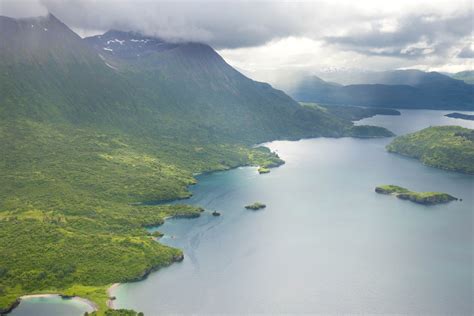Kodiak, Alaska

The Emerald Isle of Alaska
Kodiak is the second-largest island in the United States—second only to Hawaii—and is part of a stunning 177-mile archipelago stretching along the Katmai Coast. Known as the Emerald Isle, the island features a dramatic blend of misty spruce forests, rugged shorelines, and expansive tundra. The Kodiak National Wildlife Refuge covers the southern two-thirds of the island, providing a haven for wildlife and a backdrop for unforgettable adventures.
Although remote, Kodiak plays a major role in Alaska’s economy. It’s home to the largest U.S. Coast Guard base, one of the top commercial fishing ports in the country, and serves as a regional hub for transportation, trade, and tourism in southwest Alaska.
Kodiak’s history runs deep. The Alutiiq (Sugpiaq) people have lived on the island for thousands of years. Russian settlers arrived in the 1700s, briefly making Kodiak the capital of Russian America. Today, this cultural heritage is preserved in local museums, art, and community traditions.
Visitors come to Kodiak to spot world-famous Kodiak brown bears, fish in pristine waters, explore secluded beaches, and experience a lifestyle shaped by wilderness and resilience. Whether you arrive by air or sea, you’ll discover that Kodiak is one of Alaska’s best-kept secrets—rich with history, wildlife, and wild beauty.
Did You Know?
Kodiak is home to some of the largest brown bears in the world—males can weigh over 1,500 pounds.
The island’s sea otter population was nearly wiped out by Russian fur traders in the 1800s but has made a strong comeback.
Kodiak was the filming location for the movie The Guardian, starring Kevin Costner and Ashton Kutcher.
The original Native name for Kodiak was “Qikertaq,” meaning “island” in Alutiiq.